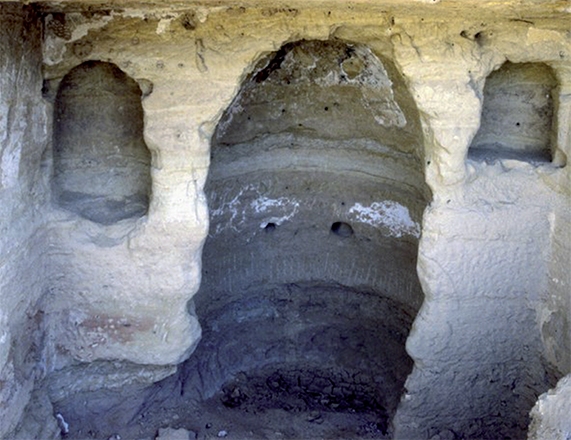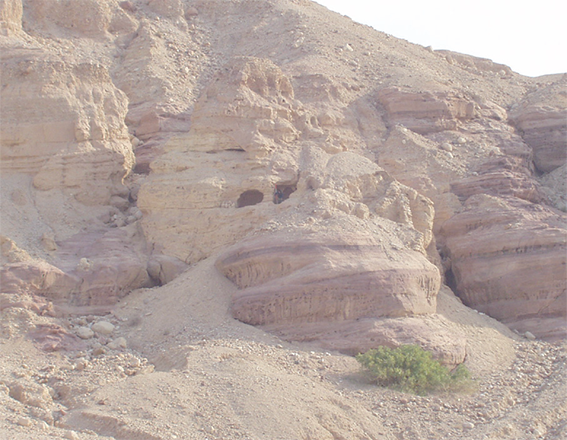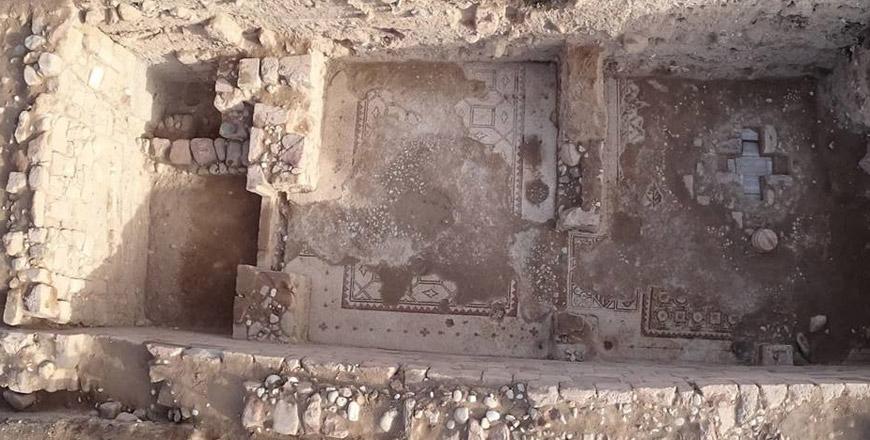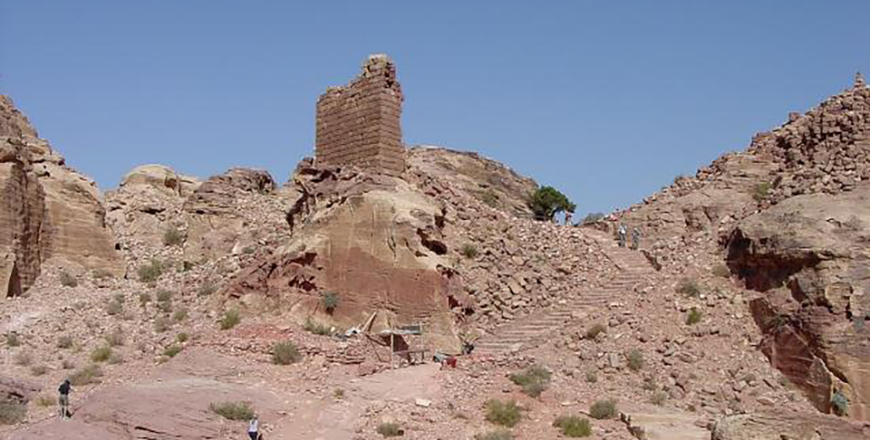You are here
Wadi Hasa: Examining various theories about ancient hermitage cave
By Saeb Rawashdeh - Mar 19,2024 - Last updated at Mar 19,2024

Rock-cut prayer niches in the chapel (Photo courtesy of Konstantinos Politis)
AMMAN — Located between Karak and Tafileh, Wadi Hasa is not only an area for hikers and rock climbers. Cliffs and inapproachable caves for centuries were home of hermits and ascetic forms of Christianity. Wadi Hasa was a border between Moab and Edom in Biblical times, and it has been an area of interest for archaeological exploration.
“On the northern cliff-side escarpment of the mouth of Wadi Hasa is a cave hewn into the rock with two interconnecting chambers. The northern one contains a double stone-cut cist tomb,” said Konstantinos Politis, a Greek archaeologist who has been studying Levantine sites for 40 years.
The adjacent southern chamber has an apse on the eastern side flanked by two niches, continued Politis, adding that three stone-built rooms lie immediately to the southeast.
“The cave must have been visible for centuries but it was neither fully investigated nor completely understood,” Politis said, adding that it was described as a cave with a stone-built tomb, an adjacent chapel with an apse, two niches, Greek graffiti on walls and a reservoir.
In 1983, the cave was reported by scholars as a Byzantine tomb and researchers proposed that the so-called reservoir was in fact the building foundation of the western part of the chapel.
“By the time it was reinvestigated in more details during a regional survey, numbered and characterised as a hermitage,” Politis said, adding that the tomb had been substantially looted.
Despite looting, some remains of the early Byzantine pottery were found and, at the beginning, scholars speculated that it was a sanctuary dedicated to Saint Lot. However, after the excavations at Deir Ain Abata in 1988-2004, this idea was rejected.
“The tomb must have been well-built as fine ashlar sandstone blocks strewed the area and it was covered with stone slabs,” Politis noted, adding that it may have had an arched superstructure, but now all evidence except the scattered blocks is missing.
Stone benches on either side of the tomb were presumably for pilgrims to sit on, perhaps emulating a Graeco-Roman funerary biclinium, he continued, adding that the adjacent southern chamber has an apse of one metre wide on the eastern side flanked by two niches. The chamber has remnants of lime wall plaster, some painted in red and in places etched graffiti in Greek.
Two inscriptions can be seen as graffiti of pilgrims, alluding to the place as holy.
“This structure must have been a Christian chapel accompanying the tombs for pilgrims to pray in and possibly leave offerings. The three stone-built rooms identified southeast of the chapel were coated with a mud-and-straw mixture, but they were not excavated,” Politis underlined, adding that since no waterproof lime mortar was found, the proposition that this was a water cistern was rejected.
Instead it is more likely that these three rooms were meant as cells for ascetic hermits or perhaps as a small pilgrims’ hostel similar to a larger one found at Saint Lot’s Sanctuary in Ghor Safi.
Water reservoir and basins were very important for survival of hermits in the arid climate. At Deir Ain Abata the monastic reservoir was the biggest structure on the site.
“The hermitage at Wadi Hasa may be characterised as a cliff-side memorial site venerating the burial place of two saintly ascetics. The Greek etched inscription naming it a holy place indicates that it was a recognised early Christian pilgrimage site in Byzantine Palestina Tertia, perhaps related to a passage in the Bible,” Politis highlighted, noting that it is also possible that a hermit or caretaker may have lived there
“Taking the holy place inscription and the impressive burial chamber into account, it seems that the site was intended as a memorial to a holy man who attracted a significant number of pilgrims,” Politis concluded.
Related Articles
AMMAN — Palaestina Tertia, a late Roman-Byzantine province, was well known for its monastic life.
AMMAN — Modern Ghor Safi, located at the southeastern end of the Dead Sea near the lowest point on earth, has been populated for over 12,000
AMMAN — During Baldwin I (1100-118), Crusaders built a fortress Al Wu’ayra inside Petra and the stronghold was part of the same network of c


















